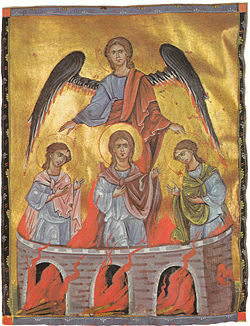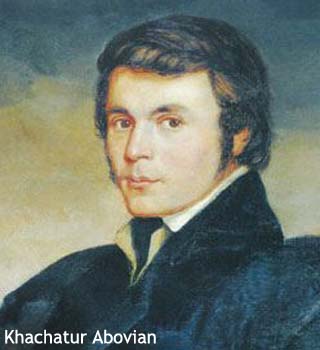Armenian art is something that originates in antiquity. Most
of their art, no matter the medium, is full of symbolism – especially Christian
symbolism.
Armenia is famous for its carpets. These carpets were woven
to not only cover the floors but also to decorate walls and to use as covers
for furniture. To learn how to weave is something every Armenian woman would
learn to do. Armenian rugs and carpets were not only known for its variety of colors,
but it’s resistance to fading. Even the oldest surviving knotted carpet (dated
from between 5th to 3rd century BC) showed very little
signs of fade, but there was noticeable deterioration of the weave itself. From
what I’ve gathered in looking at pictures of Armenian carpets, most carpets will
have a border design with a symmetrical geometric-shaped design (or sets of
designs) in the middle, usually in a contrasting color to the background. The
border design may or may not be a completely different set of colors and
designs. They’re absolutely beautiful; I’d love to have one of my own.
Another art form that started in the same era was the
illuminated manuscripts, especially those of Toros Roslin. His illustrations to
Armenian manuscripts have become the baseline that others are compared to, and
some of the most famous that have survived to this day. Fresco painting inside churches and
cathedrals were also quite popular and quite extensive works of art.
Most pre-19th century literature was religious
and/or history based material. The father of modern Armenian literature is
contributed to Khachatur Abovian (1804-1848) whose work The Wounds of Armenia is considered his finest. He was among the
first to veer away from the classical form of literature. It’s amazing that he
accomplished such a title, and he was only 44 years old.
Even after communist Russia took control, traditional-style
literature still maintained its popularity despite its highly-controlled and
censored publishing practices. During the 1960s, a new class of writers emerged
again, becoming more forthright about topics such as communist rule and the
Armenian Genocide. Among these writers is Hovhannes Shiraz. His mother was
actually killed during the Genocide, and he was given the surname Shiraz (named
after the Iranian city known for its roses and poetry, and my favorite: shiraz
wine) by novelist Atrpet.
One untitled poem I found on Wikipedia has stuck with me all
day. His writing is based in emotion, and his use of various literary devices
(such as metaphors, personification, anecdotes) enhances the descriptions. I
really enjoyed it; it was something to think about:
In
my dreams my door was knocked at,
"Who
is it?" I asked from inside.
Some
elderly lady from the outside
Answered
and said, "I'd sacrifice myself for you."
"I've
come to ask for a piece of bread as charity
I'm
a poor orphan woman with no one to support me."
At
this point I opened my door immediately,
Only
to find a miracle; it was my deceased mother indeed!
I
was shocked but fell into her arms;
And
my mother said, "It's me, it's me,
I've
come to try you and to check on you.
I
hope life hasn't changed your spirit and also you?!"
I
came in the form of a beggar
So
that the whole world can be a witness
To
see if your conscience, my dear son,
If
your conscience also died along with me?!"
I found that the Armenian Research Center at the
University of Michigan at Dearborn has a nice collection of Armenian poetry and
excerpts of texts translated into English. Please check it out for yourself: http://www.umd.umich.edu/dept/armenian/literatu/
Up next: Music and Dance
Resources:
Wikipedia: “Armenian art” “Toros Roslin” “Hovhannes Shiraz”




No comments:
Post a Comment